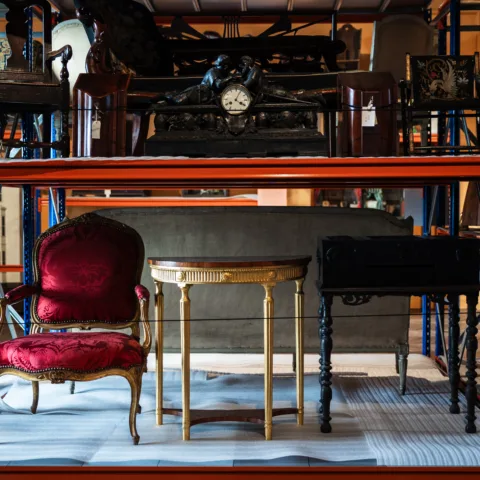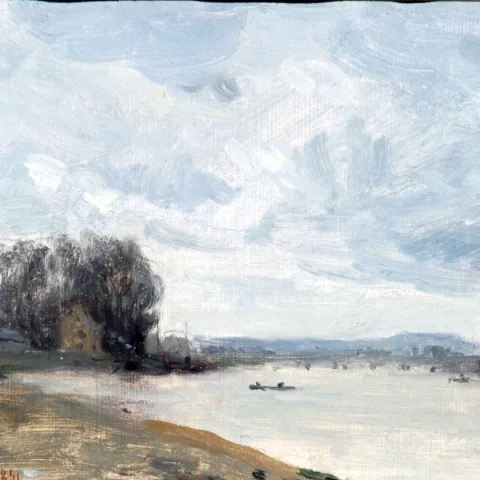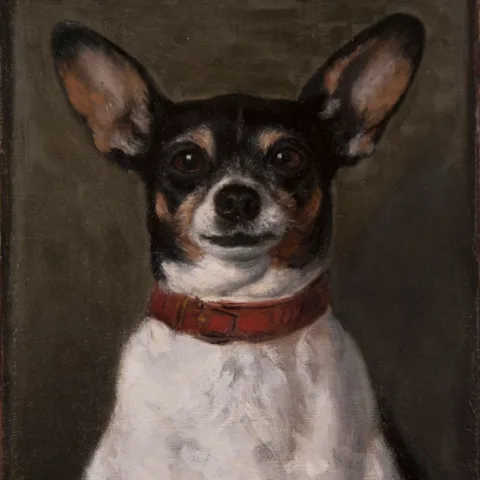The Bowes Museum Blog

Into Madame Bowes’ hidden collection: The wedding medallion of Louis XVI and Marie Antoinette
Deep within the Archives of the Bowes Museum are collections of fine artefacts, too small or delicate to place onto display. Here, lies some of Madame Joséphine Bowes’ most unique and mysterious finds, from paintings to miniatures, to jewellery, ceramics to old notebooks, and one of the most fascinating of these artefacts must be a miniature watercolour medallion, one of the final purchases made by Madame Bowes before her death in 1874.
The medallion was from the marriage of Louis XVI and Marie Antionette, and was approximately created between 1768-1772, in the years surrounding their wedding. Married on 19th April 1770, if the medallion was created specifically for the wedding day, it would have had to be finished by 1770, so the fact it was possibly not finished until 1772 suggests that this could have been presented to the royal couple during their marriage as a belated gift, or as an anniversary present.
This medallion features a watercolour picture against a background of straw set crossways, surrounded by a beautifully sculpted golden frame. Medallions are often commemoratives, given to individuals as a tribute and featuring an artistic representation of them. The picture portrays a dolphin that hovers above a cloud and a flaming torch, besides a double headed eagle and Cupid in flight above the two animals, bearing a torch in his hand.
These symbols were specifically chosen to honour Louis XVI, with the dolphin representing his position as Dauphin, and a reference to the depiction of the dolphin on the French coat of arms. The double-headed eagle is also an important symbol, representing a powerful Empire, which, as the monarch of his country, was important for Louis XVI to symbolise his power within his position, and to demonstrate the strength of his empire. More so, it represents the alliance between France and Austria which formed through the marriage of Louis XVI and Marie Antionette, with Austria’s coat of arms featuring a double-headed black eagle with broken chains around its legs.
Additionally, the medallion depicts Cupid, who was son of Venus, the Goddess of Love, and Mars, the God of War, thus making him the symbol of both love, war and empire. This was a significant addition to the medallion, with the love presenting the marriage of Louis XVI and Marie Antionette, and war and empire once again representing Louis XVI’s position as monarch of France. Furthermore, the presentation of Cupid holding up a torch is an important addition to the picture, as torches are used as symbol of enlightenment, with a torch held upwards symbolising life and truth. Additionally, the torch is depicted to be lit, and this represents the reformative power of a flame, thus symbolising the ever-renewing monarchy.
Joséphine Bowes was interested in this object due to her strong fascination with Marie Antoinette and her marriage to Louis XVI, and her curiosity about their romance and their journey as a couple. Because of this, she purchased the medallion on 29th April 1873 for 30 francs, alongside several other objects, including some differently decorated cups, saucers, a signed miniature and a small notebook, which have remained in the Bowes museum ever since.
The blog post was written by Charlotte Matlock, Charlie Henderson and James Pritchard. This was a research project conducted on the Museum’s French Revolutionary and Napoleonic collections, as part of a module on France in the age of revolution by the History Department at Northumbria University. This visit was funded by Northumbria University’s Teaching Quality Enhancement Fund.







